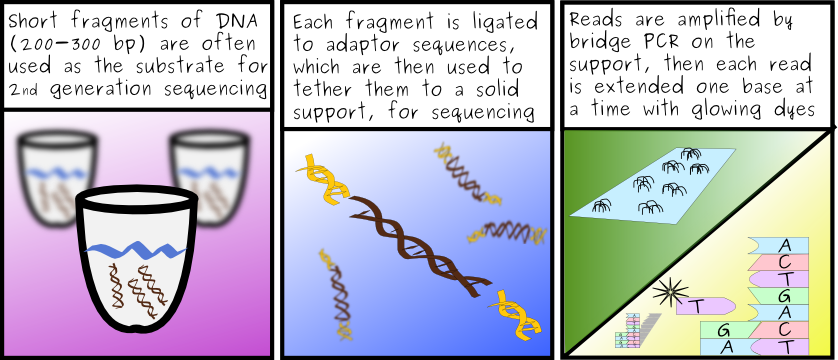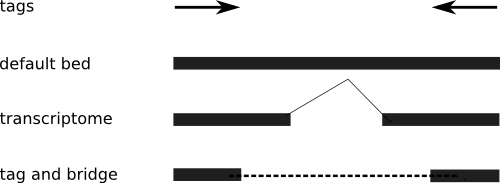I'm going to venture off the beaten track for a few minutes. Ever since the discussion about conference blogging started to take off, I've been thinking about what the rights of scientists really are - and then came to the conclusion that there really aren't any. There is no scientist's manifesto or equivalent oath that scientists take upon receiving their degree. We don't wear the iron ring like engineers, which signifies our commitment to integrity...
So, I figured I should do my little part to fix that. I'd like to propose the following 4 basic freedoms to research, without which science can not flourish.
- Freedom to explore new areas
- Freedom to share your results
- Freedom to access findings from other scientists
- Freedom to verify findings from other scientists
Broadly, these rights should be self evident. They are tightly intermingled, and can not be separated from each other:
- The right to explore new ideas depends on us being able to trust and verify the results of experiments upon which our exploration is based.
- The right to share information is contingent upon other groups being able to access those results.
- The purpose of exploring new research opportunities is to share those results with people who can use them to build upon them
- Being able to verify findings from other groups requires that we have access to their results.
In fact, they are so tightly mingled, that they are a direct consequence of the scientific method itself.
- Ask a question that explores a new area
- Use your prior knowledge, or access the literature to make a best guess as to what the answer is
- Test your result and confirm/verify if your guess matches the outcome
- share your results with the community.
(I liked the
phrasing on this site) Of course if your question in step 1 is not new, you're performing the verification step.
There are constraints on what we are allowed to do as scientists as well, we have to respect the ethics of the field in which we do our exploring, and we have to respect the fact that ultimately we are responsible to report to the people who fund the work.
However, that's where we start to see problems. To the best of my knowledge, funding sources define the directions science is able to
explore. We saw the U.S. restrict funding to science in order to throttle research in various fields (violating Research Freedom #1) for the past 8 years, which was effectively able to completely halt stem cell research, and suppress alternative fuel sources, etc. In the long term, this technique won't work, because the scientists migrate to where the funding is. As the U.S. restores funding to these areas, the science is returning. Unfortunately, it's Canada's turn, with the conservative government (featuring a
science minister who doesn't believe in evolution) removing all funding from genomics research. The cycle of ignorance continues.
Moving along, and clearly in a related vein, Freedom #2 is also a problem of funding. Researchers who would like to
verify other group's findings (a key responsibility of the basic peer-review process) aren't funded to do this type of work. While admitting my lack of exposure to granting committees, I've never heard of a grant being given to verify someone else's findings. However, this is the basic way by which the scientists are held accountable. If no one can repeat your work, you will have many questions to answer - and yet the funding for ensuring accountability is rarely present.
The real threat to an open scientific community occurs with the last two Freedoms:
sharing and
access. If we're unable to discuss the developments in our field, or are not even able to gain information on the latest work done, then science will come grinding to a major halt. We'll waste all of our time and money exploring areas that have been exhaustively covered, or worse yet, come to the wrong conclusions about what areas are worth exploring in our ignorance of what's really going on.
Ironically, Freedoms 3 and 4 are the most eroded in the scientific community today. Even considering only the academic world, where freedoms are taken for granted our interaction with the forums for sharing (and accessing) information are horribly stunted:
- We do not routinely share negative results (causing unnecessary duplication and wasting resources)
- We must pay to have our results shared in journals (limiting what can be shared)
- We must pay to access other scientists results in journals (limiting what can be accessed)
It's trivial to think of other examples of how these two freedoms are being eroded. Unfortunately, it's not so easy to think of how to restore these basic rights to science, although there are a few things we can all do to encourage collaboration and sharing of information:
- Build open source scientific software and collaborate to improve it - reducing duplication of effort
- Publish in open access journals to help disseminate knowledge and bring down the barriers to access
- Maintain blogs to help disseminate knowledge that is not publishable
If all scientists took advantage of these tools and opportunities to further collaborative research, I think we'd find a shift away from conferences towards online collaboration and the development of tools favoring faster and more efficient communication. This, in turn, would provide a significant speed up in the generation of ideas and technologies, leading to more efficient and productive research - something I believe all scientists would like to achieve.
To close, I'd like to propose a hypothesis of my own:
By guaranteeing the four freedoms of research, we will be able to accomplish higher quality research, more efficient use of resources and more frequent breakthroughs in science.
Now, all I need to do is to get someone to fund the research to prove this, but first, I'll have to see what I can find in the literature...
Labels: Canadian Politics, future, General Musings, Off topic, Open Source, rant




